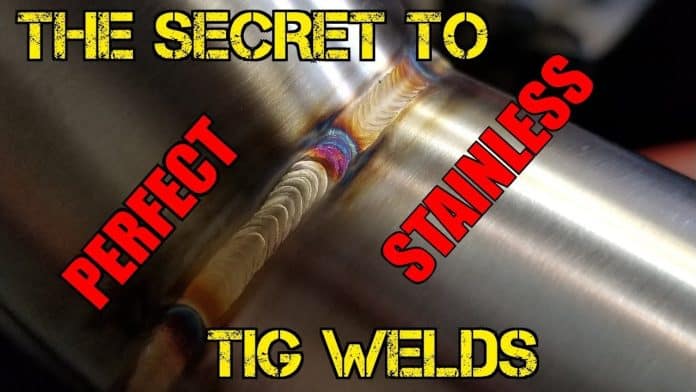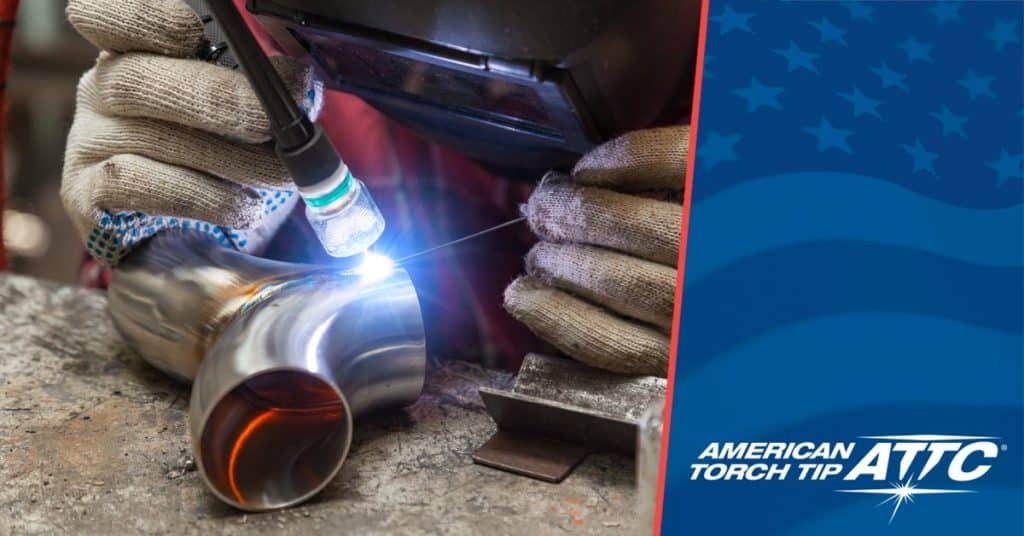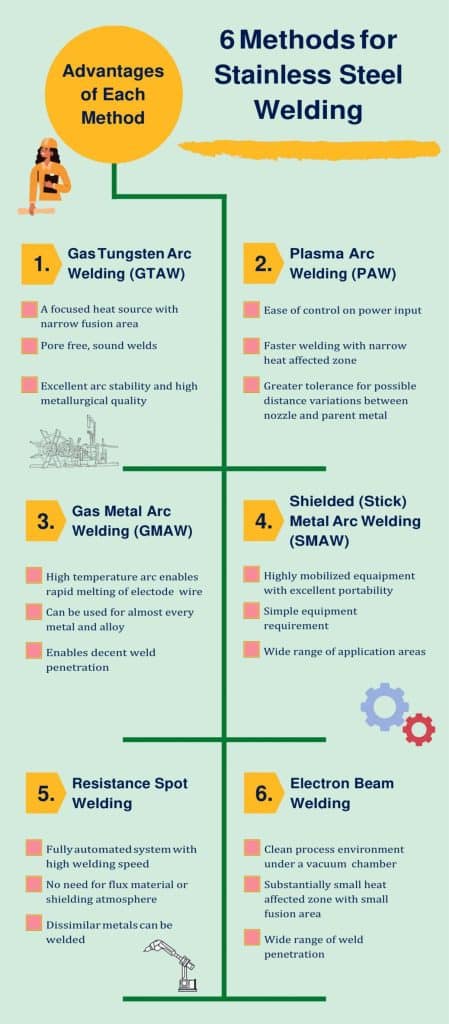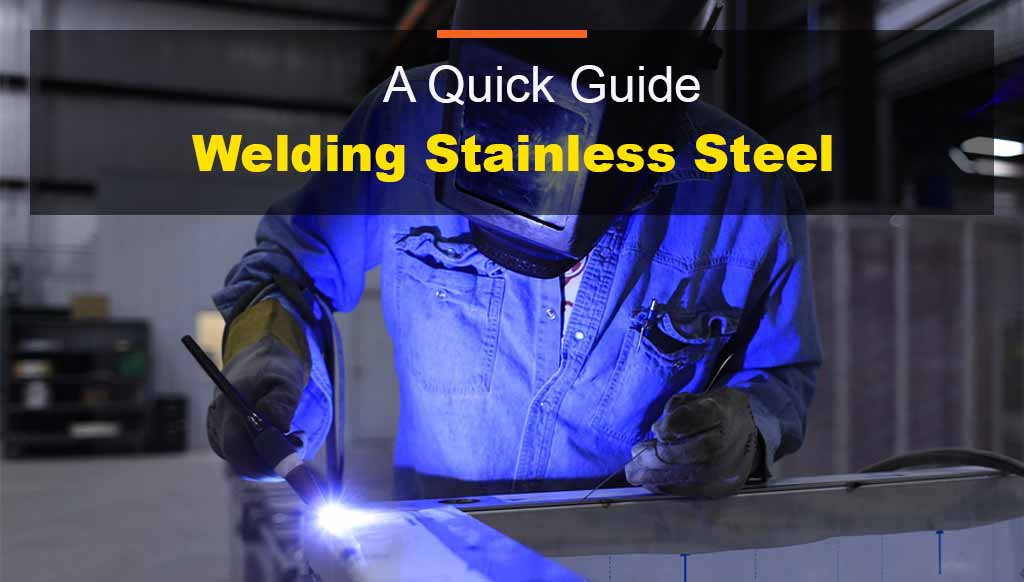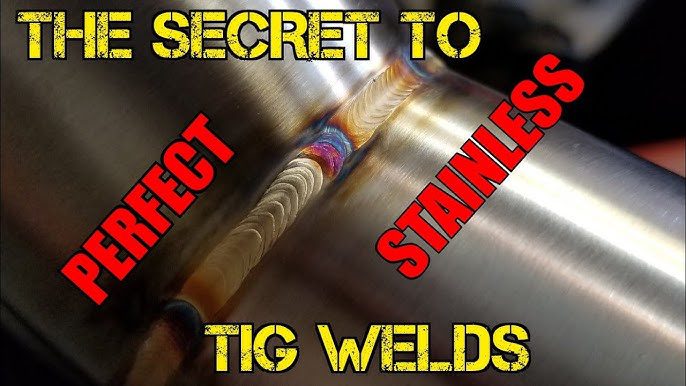Stainless steel is a material known for its durability, strength, and resistance to corrosion, making it a popular choice in a wide range of applications. However, when it comes to welding stainless steel, choosing the right technique becomes crucial to ensure a strong and seamless bond. In this article, we explore the various welding techniques available and discuss the factors that determine the best technique for welding stainless steel. Whether you’re a professional welder or a DIY enthusiast, read on to discover the key considerations that can help you achieve impeccable results when working with stainless steel.
This image is property of americantorchtip.com.
Review contents
1. Tungsten Inert Gas (TIG) Welding
1.1 Gas Shielding
Tungsten Inert Gas (TIG) welding, also known as Gas Tungsten Arc Welding (GTAW), is a versatile welding technique commonly used for stainless steel. In TIG welding, an inert gas, such as argon, is used to shield the weld area from atmospheric contamination. This gas shielding helps prevent oxidation and produces high-quality welds.
1.2 Filler Materials
TIG welding typically requires the use of filler materials, which are added to the weld puddle to create a strong joint. Stainless steel filler rods are commonly used in TIG welding as they have similar composition and properties to the base metal. The choice of filler material depends on the specific grade of stainless steel being welded.
1.3 Advantages
TIG welding offers several advantages for stainless steel welding. Firstly, it provides precise control over the welding process, allowing for greater accuracy and weld quality. TIG welding also produces clean and aesthetically pleasing welds with minimal spatter. Additionally, TIG welding can be used for a wide range of stainless steel thicknesses and positions, making it a versatile technique for various applications.
1.4 Disadvantages
Despite its advantages, TIG welding has a few drawbacks. It is a relatively slow welding process compared to other techniques, which can result in longer welding times. TIG welding also requires a high level of skill and experience to achieve optimal results, making it less suitable for beginners. Furthermore, TIG welding equipment can be more expensive compared to other welding methods.
2. Metal Inert Gas (MIG) Welding
2.1 Gas Shielding
Metal Inert Gas (MIG) welding, also known as Gas Metal Arc Welding (GMAW), is another popular welding technique for stainless steel. In MIG welding, an inert gas, such as argon or helium, is used to shield the weld area from atmospheric contaminants. The gas is typically supplied through a nozzle or gun, surrounding the electrode and protecting the molten weld pool.
2.2 Filler Materials
MIG welding for stainless steel often utilizes filler wires or electrodes made from the same or similar stainless steel grade as the base metal. These filler materials are consumed during the welding process, contributing to the formation of a strong and durable weld joint.
2.3 Advantages
MIG welding offers several advantages for stainless steel welding. It is a relatively fast process, making it more efficient for large-scale production or projects with strict time constraints. MIG welding also provides good penetration and deposition rates, resulting in strong welds. Additionally, MIG welding is easier to learn compared to TIG welding, making it suitable for beginners or less experienced welders.
2.4 Disadvantages
Despite its advantages, MIG welding has some limitations when it comes to stainless steel. It may produce more spatter compared to other welding techniques, requiring additional cleaning and post-welding work. MIG welding can also be less suitable for thin stainless steel sheets, as it may cause distortion or warping due to the higher heat input. Moreover, MIG welding may not produce welds with the same level of aesthetics as TIG welding.
This image is property of yenaengineering.nl.
3. Flux-cored Arc Welding (FCAW)
3.1 Gas Shielding
Flux-cored Arc Welding (FCAW) is a welding technique that utilizes a tubular wire filled with flux. The flux in the electrode provides gas shielding to protect the weld pool from atmospheric contamination during the welding process. This self-shielding characteristic makes FCAW a convenient choice for stainless steel welding, as it eliminates the need for external shielding gas.
3.2 Filler Materials
FCAW uses a flux-cored wire as both the electrode and filler material. The filler wire contains alloying elements that contribute to the formation of a strong and durable weld joint. The choice of flux-cored wire depends on the specific grade of stainless steel being welded and the desired properties of the weld.
3.3 Advantages
FCAW offers several advantages for stainless steel welding. One of the main advantages is its versatility in various welding positions, making it suitable for both flat and vertical-up welding. FCAW is also a high deposition rate process, allowing for faster welding compared to some other techniques. Additionally, the self-shielding characteristic of FCAW eliminates the need for external gas shielding equipment, reducing costs and setup time.
3.4 Disadvantages
While FCAW has its advantages, it also has a few drawbacks. One of the main disadvantages is the potential for increased spatter during the welding process, which can require additional cleaning after welding. FCAW may also produce welds with more porosity compared to TIG or MIG welding, especially if not properly controlled. Moreover, FCAW may not provide the same level of control and precision as TIG welding, which may limit its use in certain applications.
4. Shielded Metal Arc Welding (SMAW)
4.1 Electrodes
Shielded Metal Arc Welding (SMAW), commonly known as stick welding, is a widely used welding technique for various metals, including stainless steel. In SMAW, a consumable electrode with a flux coating is used. The flux coating provides gas shielding and facilitates the formation of slag, which protects the weld pool from atmospheric contamination.
4.2 Advantages
SMAW offers several advantages for stainless steel welding. It is a versatile process that can be used in various environments, including outdoor and remote areas. SMAW is also suitable for welding thick stainless steel sections due to its high heat input, providing good penetration. Additionally, stick welding equipment is relatively portable and affordable, making it accessible to a wide range of welders.
4.3 Disadvantages
Despite its advantages, SMAW has some limitations for stainless steel welding. Stick welding produces more spatter compared to other processes, which can result in increased cleaning and post-welding work. SMAW also requires regular electrode changes during welding, contributing to downtime and interruptions in the welding process. Moreover, SMAW may not provide the same level of control and fine-tuning as TIG or MIG welding, especially for highly critical or precise welds.
This image is property of www.cruxweld.com.
5. Plasma Arc Welding (PAW)
5.1 Plasma Gas
Plasma Arc Welding (PAW) is a specialized welding technique commonly used for precision welding of stainless steel. In PAW, a highly concentrated plasma arc is used to melt and join the metal. The plasma arc is created by ionizing an inert gas, typically argon, using a non-consumable tungsten electrode.
5.2 Advantages
PAW offers several advantages for stainless steel welding. The highly concentrated and precisely controlled plasma arc allows for high-quality welds with minimal distortion. PAW also provides excellent weld penetration and allows for welding of thin materials without warping. Additionally, PAW can be used for both manual and automated welding, providing flexibility in various production scenarios.
5.3 Disadvantages
While PAW has its advantages, it also has a few limitations. It is a relatively complex and specialized welding process, requiring specialized equipment and expertise. The setup and maintenance of PAW equipment can be more time-consuming and costly compared to other techniques. Moreover, due to the concentrated heat input, there is a risk of overheating or burning through thin stainless steel sections if proper control and technique are not employed.
6. Laser Beam Welding (LBW)
6.1 Focused Laser Beam
Laser Beam Welding (LBW) is a precise and efficient welding technique commonly used for stainless steel. In LBW, a high-energy laser beam is focused on the joint area, melting and joining the metal. The concentrated energy of the laser beam provides rapid heating and melting, allowing for precise control and minimal heat-affected zones.
6.2 Advantages
LBW offers several advantages for stainless steel welding. It provides exceptional precision and control, making it suitable for applications that require fine detail and minimal distortion. LBW also allows for high welding speeds, resulting in efficient production. Additionally, LBW produces clean and aesthetically pleasing welds with negligible spatter.
6.3 Disadvantages
Despite its advantages, LBW has a few limitations for stainless steel welding. It requires specialized and expensive equipment, making it more suitable for industrial settings rather than small-scale operations. LBW also has limitations in welding thick stainless steel sections, as the high energy density may cause excessive melting and burning. Moreover, LBW is sensitive to fit-up tolerances and joint preparation, requiring precise alignment and preparation for optimal weld quality.
This image is property of cdn.shopify.com.
7. Electron Beam Welding (EBW)
7.1 Electron Beam
Electron Beam Welding (EBW) is a high-energy welding process commonly used for stainless steel and other metals. In EBW, a highly focused beam of electrons is generated and directed onto the joint area. The kinetic energy of the electrons is converted into heat upon impact, melting and joining the metal.
7.2 Advantages
EBW offers several advantages for stainless steel welding. It provides deep penetration and high welding speeds, making it suitable for thick or complex stainless steel components. EBW also produces welds with minimal distortion and a narrow heat-affected zone, preserving the material’s properties. Additionally, the vacuum environment in which EBW takes place eliminates the need for gas shielding and reduces the risk of atmospheric contamination.
7.3 Disadvantages
While EBW has its advantages, it also has a few limitations. It requires specialized and expensive equipment, making it more suitable for high-volume production or critical applications. EBW is sensitive to joint fit-up and cleanliness, requiring meticulous preparation for optimal results. Moreover, the vacuum environment can limit the size and shape of the components that can be welded using this technique.
8. Resistance Welding
8.1 Types of Resistance Welding
Resistance Welding is a group of welding processes that rely on the heat generated by electrical resistance to join metals. In resistance welding, two or more metal surfaces are pressed together and an electric current is passed through them, generating heat at the interface and creating a weld. The most common types of resistance welding include spot welding, seam welding, and projection welding.
8.2 Advantages
Resistance welding offers several advantages for stainless steel. It is a fast process, with the ability to create multiple welds simultaneously, making it highly efficient for mass production. Resistance welding also provides consistent and strong welds, ensuring reliable joint integrity. Additionally, it does not require additional filler materials or gas shielding, reducing material and operational costs.
8.3 Disadvantages
Despite its advantages, resistance welding has a few limitations. It may not be suitable for complex or irregularly shaped stainless steel components, as it requires proper alignment and surface contact for effective welding. Resistance welding is also limited in terms of the thickness of the stainless steel that can be welded, as excessively thick materials may require higher currents or longer welding times. Moreover, resistance welding equipment can be expensive and may require regular maintenance.
This image is property of i.ytimg.com.
9. Friction Stir Welding (FSW)
9.1 Rotating Tool
Friction Stir Welding (FSW) is an innovative solid-state welding technique commonly used for joining stainless steel and other materials. In FSW, a rotating tool with a specially designed pin and shoulder is traversed along the joint line, generating frictional heat. The heat softens the material without melting it, allowing for the formation of a solid-state weld.
9.2 Advantages
FSW offers several advantages for stainless steel welding. It provides high-quality welds with excellent mechanical properties, as the absence of melting avoids potential solidification and cooling issues. FSW also eliminates the need for additional filler materials or gas shielding, reducing costs and process complexity. Additionally, FSW has the ability to join different thicknesses and types of stainless steel, making it suitable for dissimilar material welding.
9.3 Disadvantages
While FSW has its advantages, it also has a few limitations. It requires specialized equipment and tooling, which can be costly. FSW is also limited in terms of joint accessibility, as it requires sufficient space for the rotating tool to traverse the joint. Moreover, FSW may not be suitable for applications that require aesthetically pleasing welds, as it often leaves a visible line or texture on the surface of the joint.
10. Stud Welding
10.1 Stud Welding Process
Stud Welding is a specialized welding process commonly used for attaching studs or fasteners to stainless steel and other metals. In stud welding, a stud or fastener is positioned on the base material, and an arc is generated between the stud and the base. The heat from the arc melts and joins the stud to the base, creating a strong and secure connection.
10.2 Advantages
Stud welding offers several advantages for attaching studs to stainless steel. It provides fast and efficient attachment, as multiple studs can be welded in a short amount of time. Stud welding also produces strong and reliable connections, ensuring the studs remain securely in place. Additionally, stud welding does not require additional filler materials or gas shielding, simplifying the welding process.
10.3 Disadvantages
Despite its advantages, stud welding has a few limitations. It is a specialized process that requires dedicated equipment and proper training to achieve optimal results. Stud welding may also leave a small indentation or mark on the surface of the base material, which may not be desirable in certain applications. Moreover, stud welding may not be suitable for thin stainless steel sheets, as excessive heat input from the process may cause distortion or warping.
In conclusion, when it comes to stainless steel welding, different techniques offer a range of advantages and disadvantages. Tungsten Inert Gas (TIG) welding provides precise control and high-quality welds, but it can be slower and require more skill compared to other methods. Metal Inert Gas (MIG) welding offers efficiency and easier learning curve, but may produce more spatter and have limitations on thin materials. Flux-cored Arc Welding (FCAW) eliminates the need for external shielding gas but can result in increased spatter and weld porosity. Shielded Metal Arc Welding (SMAW) is versatile but may produce more spatter and require regular electrode changes. Plasma Arc Welding (PAW) and Laser Beam Welding (LBW) offer precision and minimal heat-affected zones but require specialized equipment and expertise. Electron Beam Welding (EBW) also provides deep penetration but is limited by vacuum requirements. Resistance Welding is fast and efficient but may have limitations on complexity and thickness. Friction Stir Welding (FSW) eliminates melting but may leave visible lines on the surface. Stud Welding offers fast and reliable stud attachment but may cause indentation or marks on the base material. Ultimately, selecting the best welding technique for stainless steel depends on the specific requirements of the project, the desired weld quality, and the available resources.

